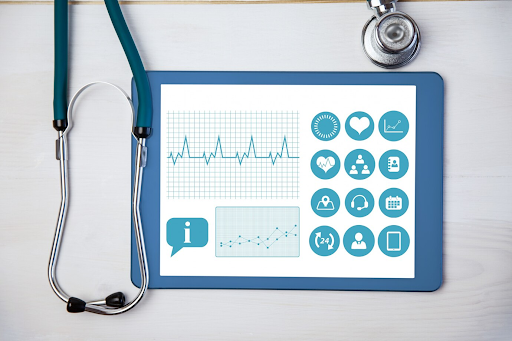The ubiquity of connected gadgets has steadily transformed the well-being and health space. From activity trackers to medical gadgets and everything in between, the Internet of Things has empowered people with unprecedented visibility into their health. Thus, people are more involved in maintaining their own health than ever. This article explores how connected gadgets are reshaping well-being by focusing on their impact, including their advantages, barriers, and future opportunities.
The Emergence of Connected Health Gadgets
fitness trackers like those from Fitbit, Garmin and Apple have become extremely common. Bands such as Fitbit, Garmin, and Apple wristwears have grown extremely prevalent. These bands assess metrics such as the number of steps taken burned calories, heart rate, and sleep patterns. Such gadgets encourage their users to be energetic while also assisting them in making decisions. The incorporation of aspects like sharing accomplishments and engaging in challenges adds a boost and community backing.
Smartwatches have progressed from timepieces to health monitors. For instance, the Apple Watch features functions, like an electrocardiogram (ECG) app, blood oxygen monitoring and fall detection. These capabilities can alert users about health concerns before they escalate significantly facilitating intervention that could potentially save lives.
Apart, from gadgets connected healthcare devices are transforming the way healthcare is managed. Tools like glucose monitors (CGMs) for individuals with diabetes smart inhalers for those with asthma and remote monitoring systems for patients with heart conditions enable health monitoring. These gadgets transmit data to professionals facilitating diagnosis, treatment and handling of chronic illnesses.
Advantages of Connected Health Gadgets
- Tailored Health Insights
Connected gadgets offer users personalized health insights that were previously hard to come by. By analyzing data over time these devices can detect trends and patterns in an individual’s health. A fitness tracker might show that a user sleeps better on nights when they exercise prompting them to make changes that result in overall health.
- Promoting Preventive Healthcare
Benefit of health gadgets is their ability to promote preventive care. By notifying users about health issues, on these devices can encourage individuals to seek medical advice before conditions worsen. Early identification and intervention can lead to health outcomes and reduced healthcare expenses.
- Improving Management of Chronic Diseases
For people living with diseases connected devices can be life-changing. For example, continuous glucose monitors help diabetics better control their blood sugar levels reducing the risk of complications.
Remote monitoring tools used by patients, with heart disease can identify irregularities. Send alerts to healthcare professionals for medical attention.
- Empowering Patients
These connected devices health empower individuals by offering them control over their well-being. By accessing health information people can make choices about their lifestyle and treatment options. This empowerment can result in adherence to treatment plans. Improved health outcomes.
Challenges of Connected Health Wearable Devices
Let’s take a closer look at the common challenges of health wearable devices.
- Data Privacy and Security. A concern associated with health devices is the protection of data privacy and security. These devices. Transmit health data making them potential targets for cyber threats. Ensuring the security of this information is crucial for building user trust and safeguarding data.
- Accuracy and Reliability. The precision and dependability of health wearable devices may vary. While many devices are highly accurate some may provide inaccurate data. Manufacturers need to uphold standards for their devices and users should be aware of the technologies’ limitations.
- Integration with Healthcare Systems. Another obstacle is integrating health devices with healthcare systems. Seamless integration is vital to ensure that the data collected by these tools is valuable to healthcare providers.
Ensuring that devices can communicate with health records (EHRs) is crucial for understanding a patient’s well-being.
- User Engagement and Adherence. For health gadgets to succeed, users must interact with them regularly and adhere to the suggested guidelines. However, maintaining engagement over time can be tough. Users might lose interest. Struggle to incorporate device use into their routines.
Future Potential of Connected Health Gadgets
Ongoing improvements in sensor technology will boost the capabilities of health wearable devices. Precise and varied sensors will allow for monitoring a range of health parameters. This will enable detailed insights into ones well being empowering users to take proactive steps towards managing their health.
Artificial intelligence (AI) holds promise in enhancing the functionality of health devices. AI algorithms can analyze volumes of health data to spot patterns and predict health issues. This could result in efficient health advice along, with early detection of diseases.
The COVID-19 pandemic has expedited the acceptance of telehealth services with health devices playing a role in this transition. These tools facilitate monitoring and virtual consultations making healthcare IoT solutions more accessible.
As telehealth services expand the use of devices will become more crucial in the healthcare landscape.
The progress in smart health technology is expected to fuel the adoption of health gadgets. Future wearables might incorporate functions like real-time monitoring of hydration levels tracking stress levels and advanced analysis of sleep patterns. These developments will offer users an insight into their health and well-being.
Conclusion
Connected health devices are transforming healthcare by granting people access to health information and valuable insights. These devices promote care improve the management of conditions and empower patients to take charge of their well-being. Yet challenges such as data security, accuracy issues and seamless integration with healthcare systems need to be addressed for their full potential to be realized.
The outlook for health devices looks promising with advancements in sensor tech, AI integration and innovations in wearables driving growth. As these technologies progress they will play a role in the healthcare sector by enabling personalized and proactive management of ones health—a vision becoming a reality, for more individuals.
The impact of health devices is profound as they offer a glimpse into a future where technology and healthcare seamlessly intertwine. By embracing these advancements individuals can achieve health outcomes. Lead healthier lives with better knowledge at their disposal.






